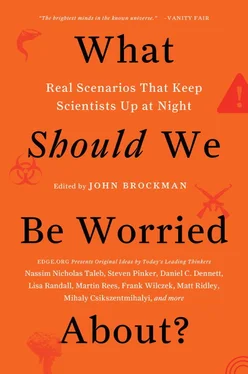Personal letters have traditionally been an important literary medium. The collected letters of a Madame de Sévigné, Vincent van Gogh, Jane Austen, E. B. White, and a thousand others are classics of Western literature. Why have no (or not many) “collected e-mails” been published, on paper or online? It’s not only that e-mail writing is quick and casual; even more, it’s the fact that we pay so little attention to the e-mails we get. Probably there are many writers out there whose e-mails are worth collecting. But it’s unlikely that anyone will ever notice. And since e-mail has, of course, demolished the traditional personal letter, a major literary genre is on its last legs.
Writing ability is hard to measure, but we can try, and the news is not good. Recently the London Daily Mail reported on yet another depressing evaluation of American students: “While students are much more likely to call themselves gifted in writing abilities [the study concluded], objective test scores actually show that their writing abilities are far less than those of their 1960s counterparts.”
It’s hard to know how to isolate the effects of net-driven word devaluation in the toxic mix that our schools force-feed our children every day. But at any rate, the Internet drivel factor can’t be good—and is almost certain to grow in importance as the world fills gradually with people who have spent their whole lives glued to their iToys.
At the Huffington Post , the future is now; the Weekly Standard has republished parts of a Huff-and-Puffington piece by the actor Sean Penn. Even assuming that Sean Penn is a lot more illiterate than most people, the Post is a respectable site, and the Penn piece is eye-opening:
The conflicted principle here, is that which all too often defines and limits our pride as Americans who, in deference to an omnipresent filter of mono-culturalism, isolationism and division, are consistently prone toward behaviors and words, as insensitive and disrespectful, while at foremost counterproductive for the generations of young Americans who will follow us.
The only problem with this passage is that it is gibberish. The average ten-year-old hasn’t fallen this far yet. But the threat is real, is way under the radar, and is likely to stay there. Prognosis: grim.
SHERRY TURKLE
Abby Rockefeller Mauzé Professor of the Social Studies of Science & Technology, MIT; director, MIT Initiative on Technology & Self; author, Alone Together: Why We Expect More from Technology and Less from Each Other
Children watch their parents play with shiny technical objects all day. Parents cradle them, caress them, never let them out of their hands. When mothers breastfeed their infants, the shiny objects are in their hands, at their ears. When parents bring their toddlers to the park, they share their attention with the shiny objects to the point that children are jealous—and, indeed, often go unattended. Playground accidents are up.
As soon as children are old enough to express their desires, they want the objects as well, and few parents say no. In parental slang, it has become known as the “passback”—passing back the iPhone to quiet your toddler in the car’s backseat.
It has always been thus: In every culture, children want the objects of grown-up desire. And so the little shiny screens pass into playpens and cribs and then to the playground. Phones, pads, tablets, computers take the place of building blocks and modeling clay and books and dolls. The screens are interactive, scintillating, quite beautiful. They support an infinite array of simulations and worlds. Beyond interactivity, they offer connection with others. Of course, they’re marketed not just as fun but as objects of artistic creation and educational worth. They may be all of these. What we know for sure is that they are deeply compelling.
The screens make children three magical promises that seem like gifts from the fairies. You will always be heard. You can put your attention wherever you want it to be. And you will never have to be alone. From the youngest age, there is a social media account that will welcome you. From the youngest age, there is a place where you can be an authority, even an authority who can berate and bully. And there is never, ever a moment when you have to quiet yourself and listen only to your inner voice. You can always find other voices.
We are embarking on a giant experiment in which our children are the human subjects. There is much that is exciting, thrilling, here. But I have some misgivings. These objects take children away from many things that we know from generations of experience are most nurturant for them. In the first instance, children are taken away from the human face and voice, because people are tempted to let the shiny screens read to children, amuse children, play games with children. And they take children away from one another. They allow children to have experiences (texting, i-chatting—indeed, talking to online characters) that offer the illusion of companionship without the demands of friendship, including the responsibilities of friendship. So there is bullying and harassment when you thought you had a friend. And there is quick, false intimacy that seems like relationship without risk, because you can always disconnect or leave the “chat.”
Children become drawn in by the three promises, but they may lose out in the end. Why? Because talking to technology, or talking to others through technology, leads children to substitute mere connection for the complexities and nuance of developing conversation. Indeed, many children end up afraid of conversation. In my studies of children and technology, when I ask children “What’s wrong with conversation?” they are able to answer by about age ten. To paraphrase their bottom line, “It takes place in real time and you can’t control what you’re going to say.” They’re right. That’s what is wrong with conversation. And of course, particularly for a child growing up, that’s what is so profoundly right with conversation. Children need practice dealing with other people. With people, practice never leads to perfect. But perfect isn’t the goal. Perfect is the goal only in a simulation. Children become fearful of not being in control in a domain where control is not the point.
Beyond this, children use conversations with one another to learn how to have conversations with themselves. For children growing up, the capacity for self-reflection is the bedrock of development. I worry that the holding power of the screen does not encourage this. It jams that inner voice by offering continual interactivity or continual connection. Unlike time with a book, where one’s mind can wander and there is no constraint on time out for self-reflection, “apps” bring children back to the task at hand just when a child’s mind should be allowed to wander. So in addition to taking children away from conversation with other children, too much time with screens can take children away from themselves. It is one thing for adults to choose distraction over self-reflection. But children need to learn to hear their own voices.
One of the things modeling clay and paints and blocks did for children was slow them down. When you watch children play with them, you see how the physicality of the materials offers a resistance that gives children time to think, to use their imaginations, to make up their own worlds. Children learn to do this alone, learning to experience this time alone as pleasurable solitude for getting to know themselves. This capacity for solitude will stand them in good stead for the rest of their lives. It is in this area that I have my greatest misgiving: The screens promise that you will never have to be alone. We can already see that so many adults are terrified to be alone. At a red light or a supermarket checkout, they panic and reach for a device. Our lives with screens seem to have left us with the need to constantly connect. Instead of being able to use time alone to think, we think only of filling the time with connection.
Читать дальше












